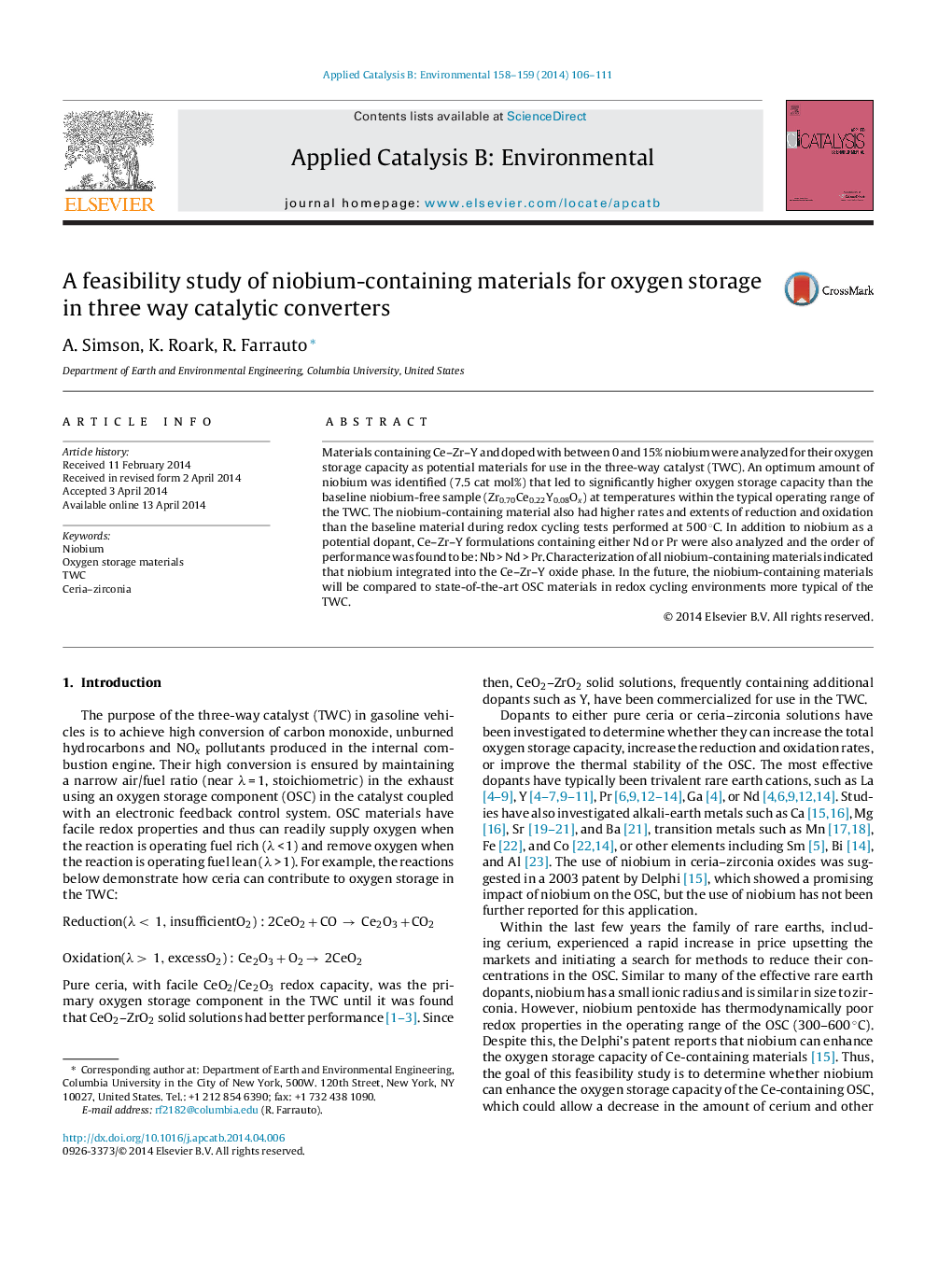| Article ID | Journal | Published Year | Pages | File Type |
|---|---|---|---|---|
| 45860 | Applied Catalysis B: Environmental | 2014 | 6 Pages |
•Addition of Nb to standard TWC materials increased their oxygen storage capacity by up to 80%.•Characterization results demonstrated that Nb integrated into the Ce–Zr–Y oxide.•TWC materials were doped with Nb, Nd, or Pr and the order of performance was Nb > Nd > Pr.
Materials containing Ce–Zr–Y and doped with between 0 and 15% niobium were analyzed for their oxygen storage capacity as potential materials for use in the three-way catalyst (TWC). An optimum amount of niobium was identified (7.5 cat mol%) that led to significantly higher oxygen storage capacity than the baseline niobium-free sample (Zr0.70Ce0.22Y0.08Ox) at temperatures within the typical operating range of the TWC. The niobium-containing material also had higher rates and extents of reduction and oxidation than the baseline material during redox cycling tests performed at 500 °C. In addition to niobium as a potential dopant, Ce–Zr–Y formulations containing either Nd or Pr were also analyzed and the order of performance was found to be: Nb > Nd > Pr. Characterization of all niobium-containing materials indicated that niobium integrated into the Ce–Zr–Y oxide phase. In the future, the niobium-containing materials will be compared to state-of-the-art OSC materials in redox cycling environments more typical of the TWC.
Graphical abstractFigure optionsDownload full-size imageDownload as PowerPoint slide
